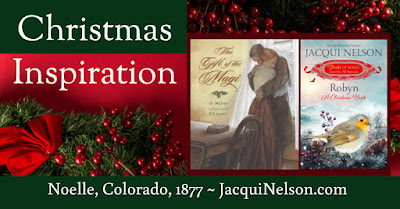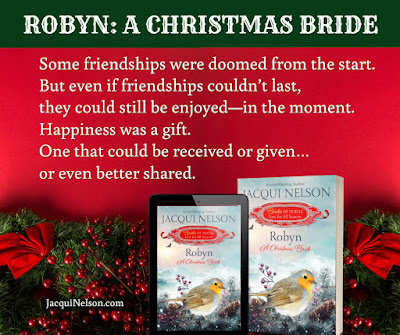Other favorite novels of mine employing this device are A Tale of Two Cities by Charles Dickens, The Scapegoat by Daphne Du Maurier, and more recently the Likeness by Tana French. The idea of switching lives with someone so alike you that you fool everyone, but then have to navigate a new social circle and pretend familiarity events not of your experience is ripe with anxiety, adventure, and unintentional humor.
When I wrote my historical western romance, Den of Thieves, I gave this plot device a shot. Wynne Palmatier is a mild-mannered shopkeeper, but when his notorious outlaw twin brother, Ennis, is captured, the Pinkerton Agency seize this opportunity by sending Wynne into the den of thieves to infiltrate the gang.
Before setting off, Wynne has a long jail-side chat with Ennis. He learns the lay of the land and details of the other gang members. He learns everything he needs to know about his brother to successfully insert himself into the outlaw gang. Or does he?
Bad twin, Ennis, can’t help but set traps to trip up his always perfect twin. What would happen if he left out crucial information such as there are also two women living at the hideout—and one of them is his wife.
We read as Wynne scrapes by, faking his way, having to do things that go against this law-abiding nature, and even falls in love. The experience alters our hero, who discovers his inner alpha male.
The story, full of twists and turns, is set against the aftermath of two major events that transformed the west: the Civil War and the great blizzard of 1887. People drifted west, including battle-scarred men. The Great Blizzard changed ranching from open range to enclosed fields, and as a consequence many a cowboy found himself out of work and in desperate circumstances. This soup of hard men was a recipe for the formation of outlaw gangs.
Den of Thieves takes place in the waning days of the outlaw gangs. Newspapers, the telegraph system, and the railroad made a life on the run less desirable. My outlaw gang has seen better days by the time Wynne joins them.
Excerpt from Den of Thieves in which Wynne, who has managed to put names to faces of all the men, describes how he got out of jail to the gang. Except who are these two women?
He took in his surroundings with quick glances. Two room cabin. Rough log walls with chinking, a cast iron stove in the corner with a basket of what looked like dried cow or buffalo chips and some kindling for fuel, coats and hats hung from pegs near the door, a bear skin hung across one wall with traps hanging near it, a crudely made bench stood under the window, and the sturdy table with mismatched chairs they sat at, standing in the center of the room. Assorted crockery, tins, and mason jars lined wooden shelves set in the wall near the stove. Everything out in the open, which was good, as he didn’t want to give away how strange the surroundings were to him.
The woman at the stove, turned to face him full on. “What happened to you?”
“I just started to tell the others. I was thrown in jail. I managed to escape out a window, but I injured my—”
“That’s not what I mean,” she snapped.
“What do you mean?”
She studied him through eyelids narrowed to slits. “You’re not the same man who left here.”
His stomach flip-flopped. He put both hands on the table and stared back at her, any thoughts having flown out his head.
She waved a ladle in his direction. “You put on some weight, I notice.”
Cord snickered. “That’s what it is! A little more of Ennis came back than the one that left. I knew something wasn’t right.” He pulled out a chair across from him and sat down.
Wynne’s chest expanded, taking in the air he’d forgotten to breathe. “You know how it is. Weeks spent eating the sheriff’s wife’s food—which is not as fine as the grub I get here, by the way—laying around in a bunk all day and night. I guess it shows in my middle.”
She turned away and said under her breath, “You keep right on and somebody’s going to need to make some alterations to their clothing.”
“I expect now I’m out of jail that won’t be somebody’s concern.” That remark of hers was needlessly mean, he thought, sucking in his gut even though it was hidden under the table at the moment.
Fritzy leaned across the table, an eager expression on his face. “How’d you escape? Did you kill the sheriff?”
The tall blonde ladled out stew into blue enamel plates as the other woman placed them on the table in front of the men. He studied her again. A slip of a girl. Her mint green dress, trimmed with ribbon and lace was of good quality and accented her fine figure. Her hands trembled when she put the food before him. He smiled at her and was pleased when she returned his with a shy one of her own that faded almost as soon as it appeared.
“No, I didn’t kill anyone, Fritzy. The guard was a young greenhorn. He forgot to lock the cell—”
Cord sat up straight. “What damn fool forgets to lock the cell?”
“Like I said he was green. I don’t even think he was a regular guard. Maybe just filling in for the regular one. I never saw him before that day as a matter of fact. Anyway, he picked up my empty dinner dishes, and I guess with his hands full—and he was real nervous! You could see how scared he was of me—anyway, between one thing and another he didn’t turn the key proper in the lock.”
“But you said you got injured in the escape,” Cord said around a mouthful of stew. “Sounds like you just walked out. What’dya do trip over the door jamb and stub your toe?”
That got a snort of laughter out of the big blonde.
“I walked out of the cell, but then I had to get down from the second floor of the jail, and there was another guard posted outside—”
Cord knitted his brows. “How’d you know that?”
Distrustful sonofagun. “I knew that because I’d seen him sitting there and heard the other guard talking to him when he brought my meals to me. Now, if I can continue my story without interruption...I couldn’t take the chance there wasn’t a guard sitting there, so I jumped out a window into an alley.”
The pretty brunette, forgetting her shyness, looked at him with her big, saucer eyes. “Did you get hurt bad?”
“It did hurt some. I think I broke a rib or two when I half landed on a barrel.”
Her hand flew to her mouth, a gesture that warmed his heart.
“That seems unlikely to me,” said Cord.
“What part exactly sounds unlikely to you, Cord?” He could feel beads of sweat breaking out above his lips. Out of the corner of his eye, he noticed the Captain regarding him with his chin tilted back, looking down his nose at him.
Cord squinted one eye. “Well, it just seems to me that a second story window is quite a height to jump from.”
He made a fist under the table to try and steady his nerves. “Did I say jump? I meant it was more like I lowered myself down. I was aiming to land on the barrel below but missed my mark some.”
Cord seemed satisfied with that answer but pointed over at him with his fork. “Where’d you get them guns?”
Somehow after the arrest Ennis’ guns had gone missing, so the sheriff provided him with a pair of Colt revolvers. Nothing fancy, but the Peacemaker was a reliable choice.
He patted his holster. “Stole them. I went to the livery to get my horse back, and I had to knock the feller there on the head.”
“Did you kill him?” Fritzy asked in a voice straining with excitement.
“No, I didn’t kill him. I expect he recovered just fine, but I did relieve him of his guns.”
The little brunette twisted her hands in her apron. “You were very daring!”
A loud thwack got his attention. The other woman had slammed down a cutting board with a loaf of bread on it, and she was looking daggers at him.
“Ah, bread! That smells good,” he said.
The blonde inclined her head toward the brunette. “Don’t set your expectations too high. Lucy baked it. Little Miss Lucy with her head in the clouds all the time.”
The brunette’s face fell. Lucy. I want to know more about you, sweetheart. She dropped her head and from lowered eyes looked from man to man as if waiting for support.
He broke off a hunk of bread and stuffed it in his mouth. It was doughy and undercooked on the inside and the crust was overdone. “Hmmm, that’s good bread. Thank you, Lucy.” Next time he’d dunk it in his stew first. Bread’s a tricky thing, he understood. Hard to get the heat right in these old stoves. His grandma had one like that.
The big blonde looked like she wanted to slap someone. Lucy took a step away into the shadows.
Fortunately, Asa changed the subject. “What I’m wondering is didn’t the law come after you the minute they saw you missing?”
Unfortunately, the subject had returned back to the story of his escape, which he hoped to leave off telling. “I expect they did, but I assure you I was long gone by the time they figured it out.”
Asa persisted. “How do you know that? They could have followed you and might be at our door before this stew is cold.”
The Captain’s eyes went wide and he began to tremble.
Asa turned to him. “Don’t fret Captain. I’m just saying that, that’s all. Nobody’s at the door... Yet. But, if you led the law to us, I swear—”
He laid down his fork for emphasis. “Have you ever known me for a fool?”
“Well, no, I….” Asa looked away and tugged at his long mustache.
“But, he’s got a point,” said the Captain, still shaken. “If they’ve got a good tracker….”
“They don’t. And I was very careful to not leave a trail.”
Fritzy leaned in all keen, curls quivering. “I bet you were. What kind of things did you do to put them off your trail.”
Wynne popped a hunk of bread in his mouth to buy some time. All eyes were trained on him. What the heck do trackers look for?
“Well, to start off I headed west out of town instead of the direction I needed to go and stayed on a well-traveled road where there were many tracks coming and going. Then I circled back riding down a stream bed. When I could I followed in the footsteps of others, and—”
“Enough!” Everyone jumped when the blonde pounded her fist on the table, brown eyes flashing. “It’s like listening to a child recount his day. Ennis got himself out of trouble the way he always manages to escape the consequences of his actions. It’s in his nature to wiggle out of a fix. No need to make a hero out of him. You don’t tell a hen how clever she is every time it lays an egg, because it’s just what it does by nature.”
Den of Thieves is available as a single title, or you can find it and in the collection Gambling on a Cowboy, featuring six full length novels for only $0.99.




































